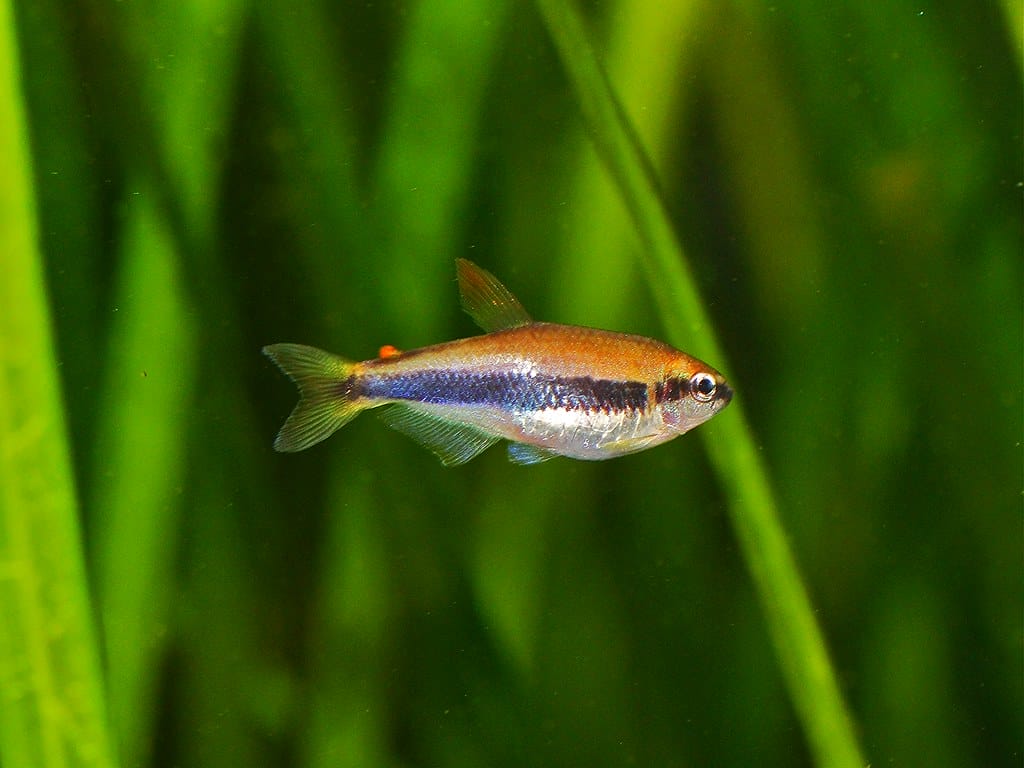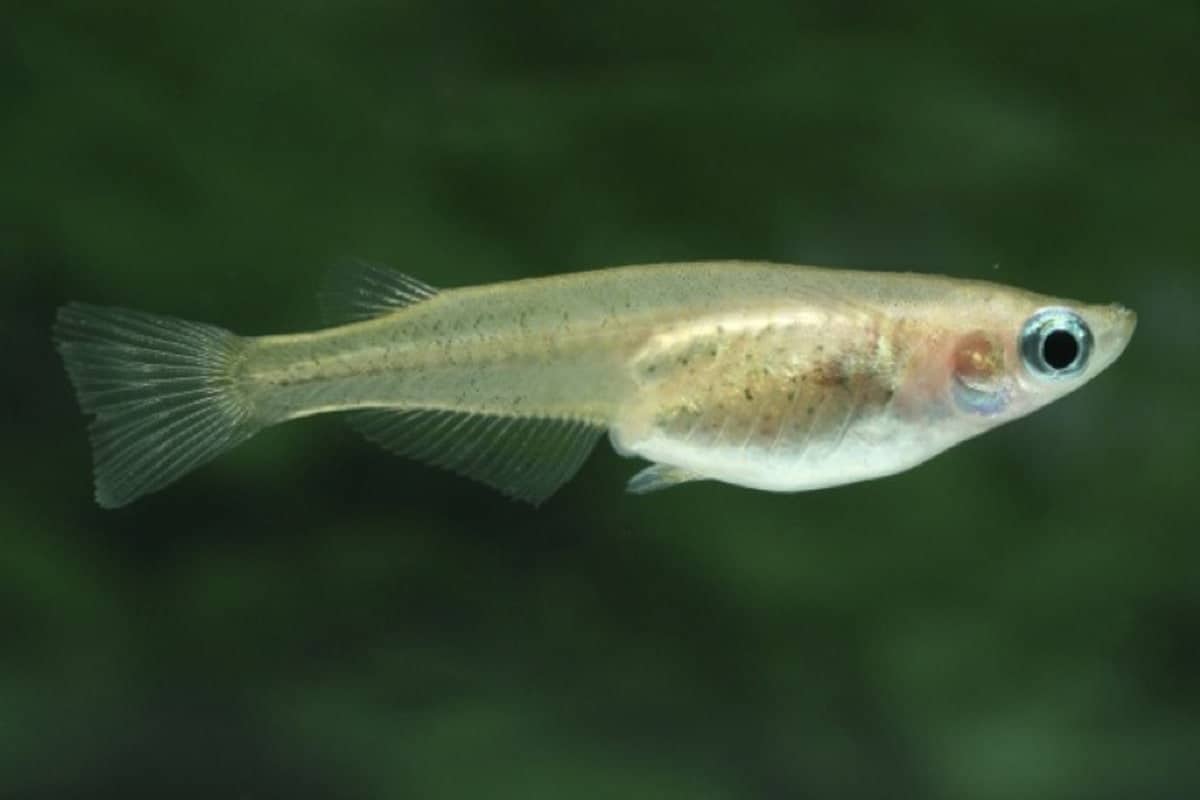
Beginner’s Guide to Caring for Ricefish

Rice fish, or Medaka, are tiny and colorful fish that come from Japan. They live in freshwater and are becoming very popular in aquariums. This is because they are tough, calm, and beautiful. Taking care of rice fish is pretty simple, but this guide will share important tips to help you create a healthy home for your new fish friends.

Read More : 15 Types of Cold Water Aquarium Fish
Understanding Ricefish
Ricefish, also known as Oryzias latipes, come from East Asia. You can find them in places like rice paddies, marshes, and slow-moving streams. These fish are very adaptable. They can live in many different water conditions. This makes them a good choice for both new and experienced aquarium owners.
Ricefish have torpedo-shaped bodies and colorful skins. They add beauty to any aquarium. Apart from their looks, they are peaceful and have interesting behaviors. This makes it fun to watch and take care of them.
The Origin and Popularity of Ricefish in Aquaculture
Oryzias latipes, known as Medaka or Japanese ricefish, have delighted fishkeepers for years. They began their journey in aquaculture in 17th century Japan. People first kept them as ornamental fish in outdoor tubs and ponds.
As more people enjoyed Medaka, they became popular in Japanese homes. People admired their beauty and their ability to control mosquito larvae in rice paddies. Medaka were not just pretty; their strong nature and easy breeding made them great for scientific study, especially in genetics and development.
Nowadays, Medaka remains a favorite in the aquarium trade. Enthusiasts around the world love them for their bright colors, calm nature, and interesting history.
Identifying Different Varieties of Ricefish
Japanese rice fish, members of the genus Oryzias, exhibit a stunning array of colors and patterns, a testament to years of selective breeding. From the classic silver and blue hues to more striking variations like gold, pearl galaxy, and platinum white, there’s a ricefish to suit every aquarist’s preference.
The captivating coloration of these fish is not just visually appealing but also plays a crucial role in their social interactions and breeding behaviors. Males, in particular, display brighter colors and longer fins to attract females during courtship displays.
Here’s a glimpse of some popular ricefish varieties:
| Variety | Description |
| Platinum White | Shimmering white body with a metallic sheen |
| Gold | Vibrant golden scales |
| Pearl Galaxy | White or cream-colored body with iridescent specks |
| Yokihi Orange | Striking orange coloration |
| Orochi Black | Deep black body |

Getting Started with Ricefish Care
Setting up a comfy and healthy home for your ricefish is key for their well-being. You should think about the size of the aquarium, the filtration system, and the water conditions. This will help you create a space that looks like their natural habitat. It also supports their health and happiness.
Picking the right tank mates is just as important. You want to ensure that your fish live peacefully together. Choose species that need the same water conditions and have similar temperaments. This way, you can avoid fights and keep a good atmosphere in the aquarium.
Essential Equipment and Setup for Your First Aquarium
To create a good home for your ricefish, you need at least a 10-gallon tank. Using a planted aquarium is best. It gives hiding spots, looks like their natural home, and keeps the water clean.
Select a gentle sponge filter. This way, you won’t have strong currents that ricefish don’t like. This filter also gives a lot of surface area for helpful bacteria to grow, which helps filter the water naturally.
You will also need extra gear like a heater, thermometer, and light. Ricefish can live in a wide temperature range, but keeping the water at about 72°F (22°C) is best. Soft and diffused lighting makes the planted aquarium look nice and helps your fish feel at home.
Selecting the Right Environment for Ricefish
Recreating the natural habitat for ricefish is important for their health when kept in captivity. These fish come from rice fields, marshes, and slow streams in Southeast Asia. They do best in places with a lot of plants, soft ground, and gentle moving water.
Ricefish can adapt well to different water conditions. They can live in a wide temperature range, ideally between 68-77°F (20-25°C). The water’s pH should be slightly acidic to neutral, ideally between 6.5 and 7.5.
It’s very important to keep ammonia, nitrite, and nitrate levels low. Regularly changing the water and ensuring good filtration will help you create a healthy space for your ricefish.

Step-by-Step Guide to Caring for Ricefish
Taking care of your ricefish well means knowing what they need and having a regular routine. If you follow these simple steps, you can make a great home for your fish.
You’ll start by setting up the aquarium. Then, you should check their health and watch for any signs of illness. Every step is important for keeping your ricefish healthy for a long time. A clean aquarium leads to happy and healthy fish.
Step 1: Setting Up the Aquarium
Start by choosing the right size aquarium. For a small group of ricefish, a tank of at least 10 gallons is best. Bigger tanks are better, especially if you want to add more fish later.
Next, put down a layer of substrate. Dark gravel or sand works well because it makes the colors of your ricefish stand out. Add lots of aquarium plants such as Java moss, Anubias, or Hornwort. These plants help create hiding spots. They also bring oxygen into the water and remove harmful nitrates.
Finally, install the filter and heater. Make sure the filter suits the tank size and has a gentle flow. Set the heater to keep the water at a steady temperature between 68-77°F (20-25°C).
Step 2: Cycling Your Aquarium Before Adding Ricefish
Before adding live fish to your new aquarium, you need to set up a healthy nitrogen cycle. This process helps good bacteria change harmful ammonia and nitrite into safer nitrates.
Cycling can take a few weeks. You can start by adding a little fish food or using a commercial bacterial supplement. Check the water conditions often with a test kit.
Once the ammonia and nitrite levels are at zero and there are nitrates, your aquarium is cycled and safe for live fish. This important step will help keep your ricefish happy right from their start in their new home.
Step 3: Maintaining Water Quality and Temperature
Maintaining good water quality is very important for your ricefish. Regularly changing the water is needed to get rid of harmful toxins and add back necessary minerals. Try to change 25% of the water every week and always use dechlorinated water.
Keep checking the water conditions with a trusted test kit. It’s also essential to monitor the temperature. Make sure it stays between 68-77°F (20-25°C). Quick changes in temperature can cause stress in fish and weaken their immune systems.
Don’t forget about the surface of the water. Ricefish like to live at the surface and need to breathe air from there. Avoid too much movement on the water’s surface caused by filters or airstones.
Step 4: Daily Feeding and Diet Tips
Feeding your ricefish a good and balanced diet is very important for their health. These fish eat both plants and meat. They like a mix of high-quality flake food, micro pellets, and some treats like live or frozen foods.
Give them a small amount of food twice a day. Make sure they eat it all in a few minutes. If you give them too much food, the leftovers can rot in the tank. This can harm the water quality.
You can also add live or frozen foods to their diet. Foods like mosquito larvae, daphnia, or brine shrimp are great options. These treats give important nutrients and help them act naturally while they look for food.
Step 5: Monitoring Health and Preventing Diseases
Regularly checking on your ricefish’s health is important. It helps you spot any illness early. Watch how they act. Look for strange marks or growths on their bodies. Notice if they are eating less than usual.
Keep new fish in a separate tank for two weeks before adding them to your main aquarium. This keeps your other fish safe from diseases. It also lets you see if the new fish have any health issues.
Signs of illness in ricefish can include tiredness, not eating, fins that are close to their body, and white spots or fungal growth on their bodies or fins. If you see any of these signs, talk to an aquatic veterinarian as soon as you can.

Conclusion
Caring for ricefish can be a fun and rewarding journey if you have the right setup and know-how. First, it’s important to understand where they come from and the different types. You need to set up the aquarium properly.
Keeping the water clean and checking their health are also important. Consistent care is essential to keep your ricefish healthy. Whether you are just starting or you have some experience, following these steps will help you build a beautiful home for them. If you want to know more or need help, check our FAQ section or contact us for expert advice.

Frequently Asked Questions
What is the ideal tank size for ricefish?
The smallest tank size needed for a small group of rice fish is 10 gallons. If you want to keep a bigger group, you should use a tank that is at least 20 gallons or more.





